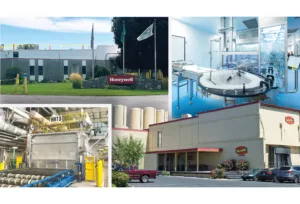Office space absorption shows gain
6.5 million square feet filled last quarter was up sharply from prior quarter
The U.S. office market absorbed 6.5 million square feet of space on a net basis during the third quarter in a big improvement over the 1.8 million square feet absorbed in the prior quarter, says a new report from Colliers International, one of the world's leading commercial real estate services firms.
Net absorption refers to the amount of office space occupied at the end of a period minus the amount occupied at the beginning of a period. It also takes into consideration any space that was vacated during the period.
The Colliers report strengthens the belief of some in the industry that the nation's largest office hubs are in the early stages of a sustained recovery. Findings from the report also suggest that office users have a limited amount of time left before the market cycle once again begins to favor landlords and rising rents, Colliers asserts.
Case in point: The largest office users in global gateway cities such as New York City, Washington, D.C., and San Francisco must choose between either locking into expansion space soon or waiting for the next development cycle to deliver fresh Class A space configured to their needs. Yet, it might be a while before the latter scenario plays out, given that few new office projects are being financed or completed, so large office users instead may choose to act soon, before rates start climbing, Colliers says.
A convergence between steady growth in office-using jobs and a narrow pipeline of new office completions and projects under construction also should tighten office market fundamentals, it says. This, in theory, will drive vacancy rates down as the availability of existing large blocks of space continues to dwindle.
"Our third-quarter office market findings are indeed encouraging in many respects," says Ross Moore, Colliers' chief economist. "One of the most positive findings is that the national office vacancy rate appears to have peaked earlier this year at 16.3 percent as the volume of new office completions has virtually dried up. In a healthier cycle, a dearth of new office development would not bode well for growing businesses. But in today's languishing economy, this is actually good news for the nation's office landlords."
Moore notes that in the latest market research, the largest office markets generated the steepest gains during the quarter. As the nation's top office market, Washington, D.C., reported more than 882,000 square feet of net absorption during the quarter, which drove its vacancy rate down to 11.6 percent, still the lowest in the nation.
In line with these results, office rents in the nation's capital climbed by $1.06 to hit an average $52.32 per square foot at the end of September, fueled largely by the addition of new government jobs and limited office completions during the quarter. Other big office markets such as New York City and San Francisco strengthened during the quarter as multinational companies in both cities and technology-based businesses in San Francisco increasingly expanded their operations.
Conversely, several of the largest interior U.S. cities continued to see their office markets weaken during the quarter. While the divergence between coastal office markets and their landlocked peers has been apparent for years, the Colliers research team also identified a widening performance gap between the largest central business district (CBD) and suburban office markets.
The nation's largest CBD markets registered just 14.9 percent vacant at the end of June, but vacancy within the suburban office market was markedly higher at 16.9 percent. One major factor that clearly has impacted the health of the suburban office market is the addition of roughly 3.8 million square feet of new office space during the third quarter alone. By comparison, just 1.63 million square feet of new office space were added in the CBD during that period.
Other highlights from the full research report, which analyzed the 63 largest office markets in the nation, include the following:
The total volume of sublease space continued to decline during the quarter, representing just 7.6 percent of total vacancy versus 8.2 percent just three months earlier.
The total amounts of office space being constructed at the end of September in the CBD and suburban markets were roughly equal, with CBD office construction amounting to 10.1 million square feet and suburban office construction amounting to 10.4 million square feet.
While overall office vacancy declined from 16.3 percent to 16.2 percent during the third quarter, it still was above the 16 percent vacancy rate at the end of September 2009.
Colliers, a subsidiary of Toronto-based FirstService Corp., says its work force includes more than 15,000 professionals in 480 offices in 61 countries.
Related Articles

_c.webp?t=1763626051)

_web.webp?t=1764835652)